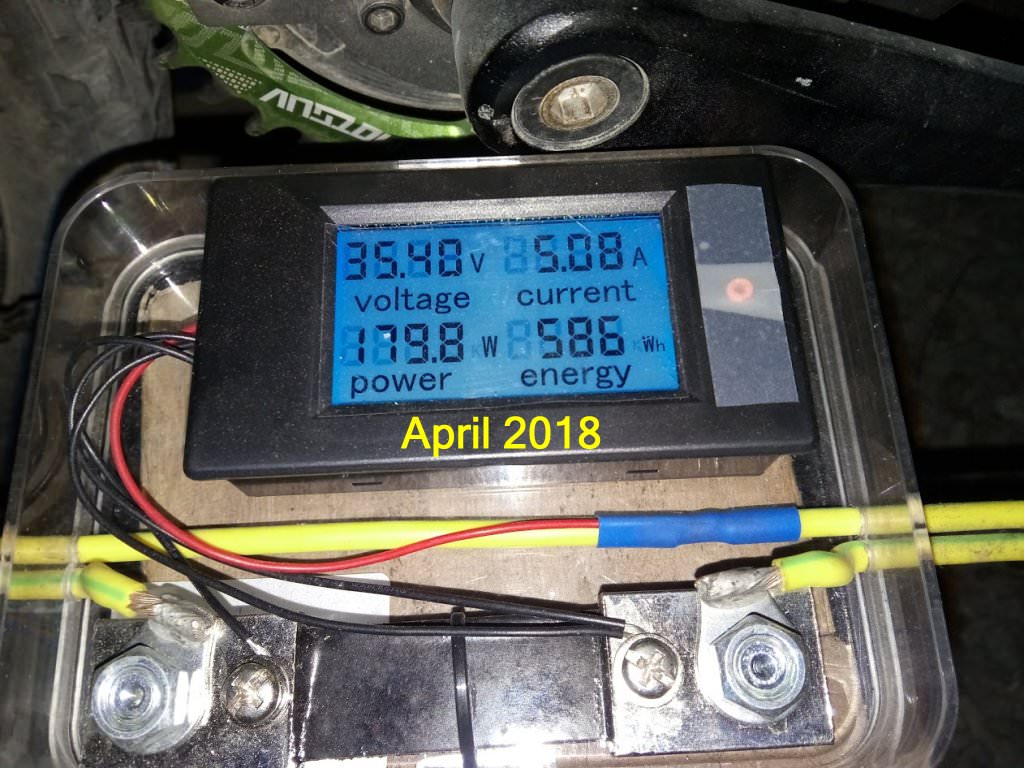Pizzabroodje said:
According to the Samsung datasheets, the 35E will have ~80% capacity left after 500 cycles with 1C / 30A discharge, and higher discharge (9A Instead of 5A).
Doesn't this mean that it can still perform well enough at 30A even after 500 cycles?
How well do you think it would perform after 300 cycles with probably most of the time less than ~60% of the capacity used?
As batteries lose capacity, they also lose power output. 1C on a 3.4AH cell is 3.4A. 1C on a cell that's lost capacity and thus has 2.7AH is 2.7A.
So let's say your 9P pack has lost 20% of it's capacity. Now, 1C is 24.48A, but your controller still wants to draw 30A. Now, you're effectively drawing 1.2C or so. You can expect the sag to go up and the cell heat to go up. Therefore, you can start a pattern of exponential degradation later in the life of the pack because you didn't have the extra overhead.
Even if the 30Q pack natively has worse degradation, you have more overhead in the discharge.
The two packs might actually last as long as each other. Figuring out exactly which one will last so long is an affair of hair splitting calculations.
Pizzabroodje said:
I don't know exactly how much I'll use it as I'll get a free public transport card for my school. So it depends on if the battery would bring me far enough at a high enough speed to be reasonably faster than public transport. If I'll use it for school everyday (3-5 days a week), I would probably use 90%-100% of the capacity (it's a 2x 27km commute).
I see. So the battery choice has to be exactly optimal.
That's quite a bit of distance to cover if you want to go high speeds.
Instead of doing some hair splitting calculations on battery degradation, i think it'd be easier to focus on the efficiency of the vehicle itself.
Seven things can really help you stretch a battery..
1) The most efficient controller you can get. The phaserunner and other field oriented controllers would fall into this camp. Good for 1-2% efficiency boost.
2) The most efficient motor you can get. Currently, this would either be a direct drive or a single stage to rear reduction RC motor. Either of these can produce efficiency in the low 90% range. Whereas a mid drive peaks out at 80%-85% typically, so we're talking about a 5% difference in how many watts are consumed.
3) The most aerodynamic vehicle. A semi recumbent can drop your air resistance by 20%. A tucked position on a bike is good for 10-15% over an upright position. A small fairing, even if it's just a circular bubble that sits on the handlebars is good for a boost of 5% and beyond.
4) Generous power bus wiring. IE if your battery cables are a bit undersized, you can lose 1%-2% of the energy flowing through them.
5) Rolling resistance for your tires. This is maybe a 1-3% difference. I haven't done the math, but i think we're talking about watt consumption in the 10's..
6) Battery efficiency. As we can see, spec sheets on many modern 18650's allow for up to a 17% energy loss before the cell ignites or smokes or whatever else. Many people today are running batteries that lose 5-10% of their energy to waste heat. The more conservatively you use a battery, the lower this will be.
7) Well, here's the easy one. Speed. The lower the better. Aerodynamics get exponentially worse, the faster you travel.
So, somewhere in here is a 10-20% efficiency gain for an upright bike using only a few of these tricks. Better efficiency of your vehicle makes for lower load on the battery, which tips us in the direction of the 35E pack being the best choice for long life.
Without these optimizations, the 30Q might be better because it can tolerate a higher load.
Pizzabroodje said:
"I usually error on the side of higher discharge over capacity when the comparison is close."
So in the end you recommend going with the 35E right?
Well, as you see above, the difference is really up to how much power you're drawing. I always want to go towards more range. My goal would be to figure out how to use the 35E in the most efficient manner possible.



